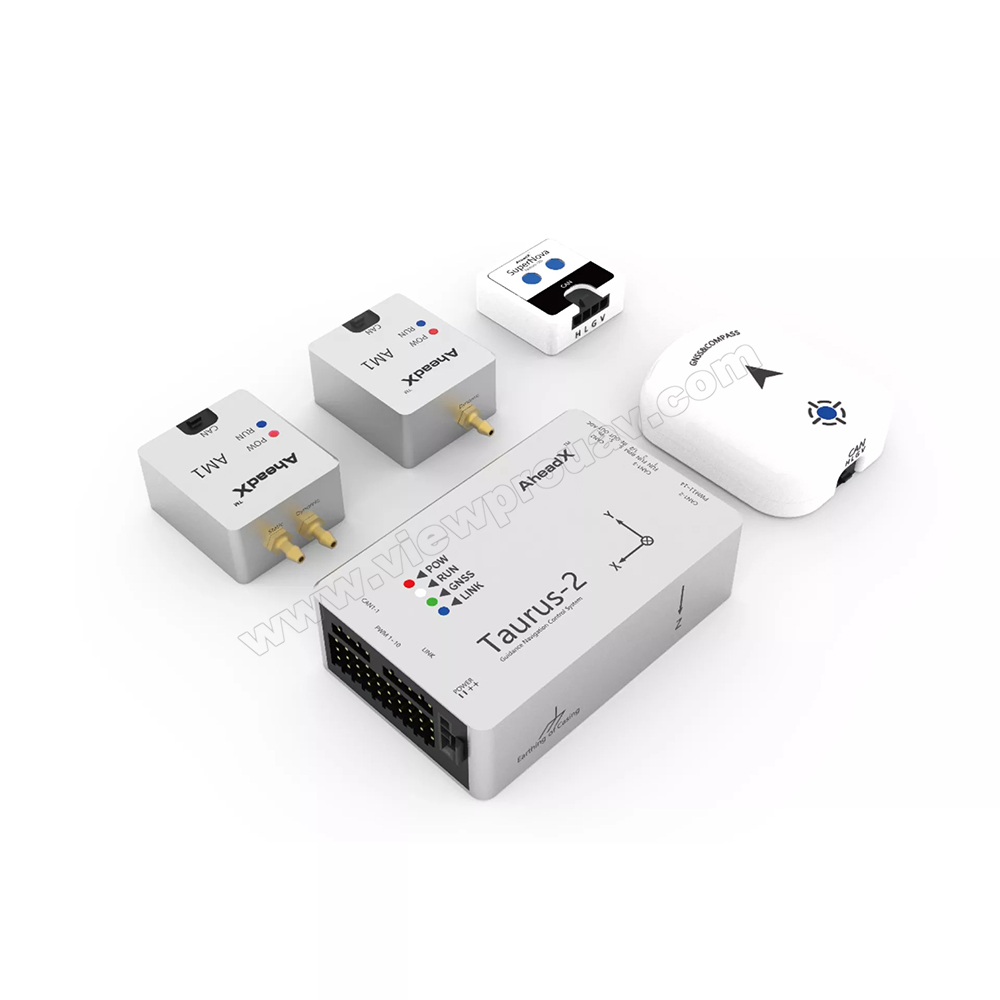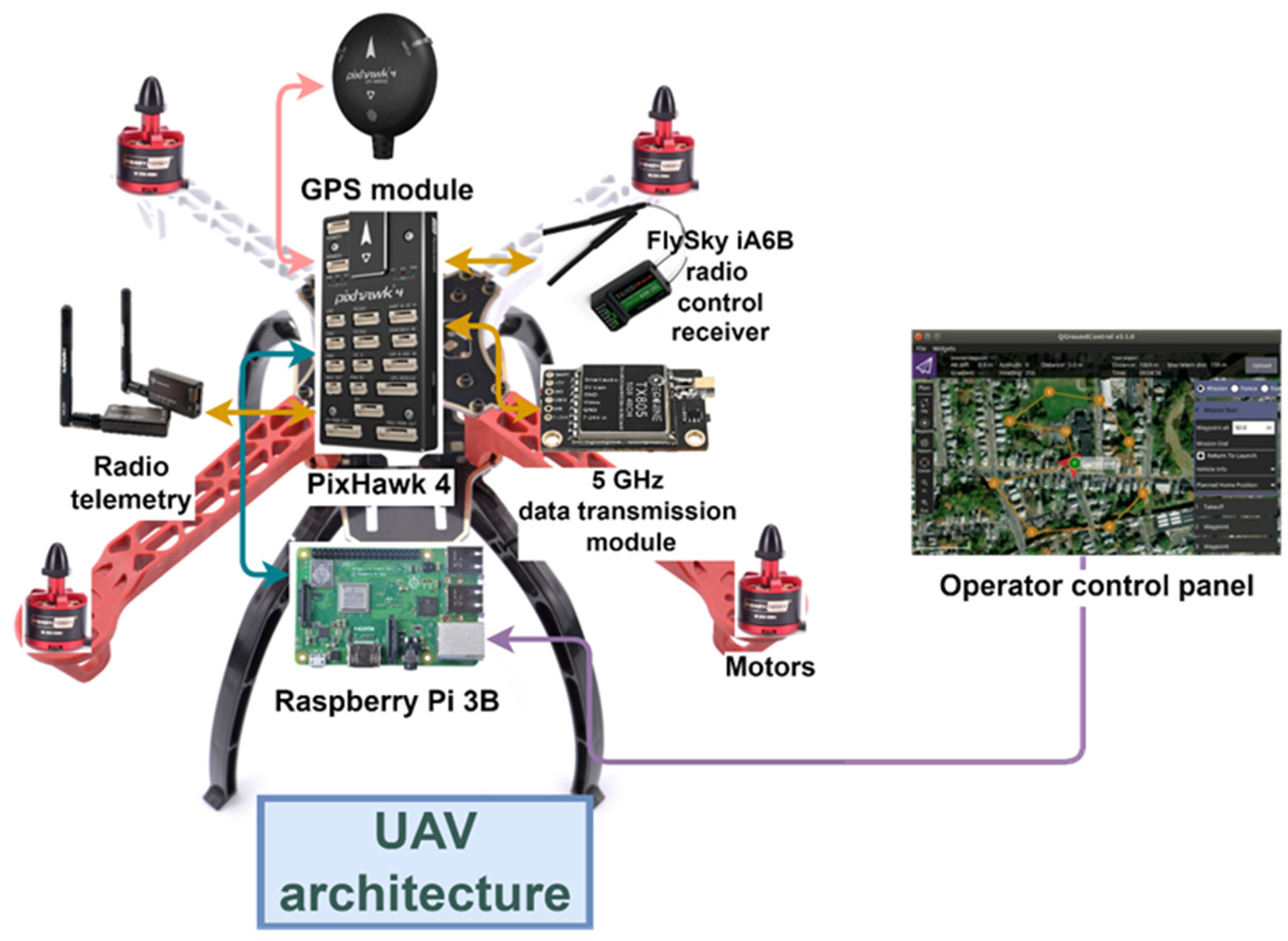SparkNavi Drone Flight Controller and GNSS/INS Made in Taiwan: Precision and Technology
Wiki Article
The Relevance of Drone Flight Controllers in Modern Aerial Innovation: Key Parts and Their Effect
In the realm of modern-day aerial innovation, drone trip controllers work as the critical systems that coordinate a drone's performance and capabilities. These advanced units integrate necessary components such as microcontrollers and GPS modules, helping with security and accuracy in flight operations. Their function is especially noticable in independent features, where innovative formulas boost navigation and barrier evasion. As markets increasingly depend on drones for applications ranging from agriculture to monitoring, the progressing technology within trip controllers elevates crucial concerns regarding their future impact and possible innovations. What developments exist ahead that could redefine our understanding of drone abilities?
Summary of Drone Trip Controllers
In the realm of aerial technology, drone flight controllers act as the crucial mind of unmanned airborne vehicles (UAVs), enabling exact ability to move and security during flight. These innovative systems incorporate sensor data, refining formulas, and control inputs, allowing drones to perform intricate trip patterns with precision.Drone flight controllers use various sensing units, such as gyroscopes, accelerometers, and GPS components, to assess the UAV's alignment and position in real-time. This info is crucial for preserving equilibrium and ensuring safe procedure in diverse ecological problems. The controllers process this information to make immediate modifications to the drone's electric motors, enabling smooth changes and responsive handling.
Additionally, flight controllers are equipped with sophisticated software that sustains features such as waypoint navigating, barrier evasion, and independent trip capabilities. This software program is crucial for both industrial and entertainment applications, where dependability and precision are extremely important. As drone innovation remains to development, the development of trip controllers will play a critical duty in improving UAV convenience, safety and security, and capability, eventually expanding their applications throughout various industries.
Trick Parts Explained
Comprehending the essential components of drone trip controllers is vital for comprehending how these systems operate successfully. At the heart of a flight controller is the microcontroller, which serves as the mind, refining information from different sensing units and carrying out commands. Important sensing units consist of accelerometers and gyroscopes, which determine the drone's alignment and motion, giving important responses for stabilization.One more trick element is the barometer, which determines altitude by measuring climatic stress, while GPS components supply positional data, making it possible for self-governing navigating - SparkNavi drone flight controller and GNSS/INS made in taiwan. The flight controller likewise interfaces with Electronic Speed Controllers (ESCs), which manage the rate of the drone's motors based upon the controller's commands
Interaction modules, such as radio receivers, facilitate remote input, enabling drivers to send out commands in real-time. Furthermore, some trip controllers incorporate software that can handle intricate algorithms for waypoint navigating, trip preparation, and telemetry data evaluation.
Duty in Trip Stability
Central to preserving flight stability, drone flight controllers use sophisticated formulas to process sensing unit data and make real-time adjustments. These controllers are outfitted with a range of sensors, consisting of barometers, gyroscopes, and accelerometers, which constantly browse around this site monitor the drone's rate, positioning, and altitude. By translating this information, the trip controller can recognize discrepancies from the wanted trip path and respond promptly to keep stability.For instance, if a drone experiences an unanticipated gust of wind, the trip controller can promptly readjust the electric motor speeds to combat the disturbance, making sure a consistent flight trajectory. This ability is important not just for hands-on flight operations but likewise for carrying out complicated maneuvers and maintaining smooth trip in various ecological conditions.
.jpg)
In addition, the advanced formulas used in flight controllers, such as PID (Proportional-Integral-Derivative) control, permit fine-tuning of the drone's feedback to changes in flight problems. By optimizing these control parameters, flight controllers can boost stability, enhance responsiveness, and reduce pilot workload. Inevitably, the function of flight controllers in making sure flight security is vital for the secure and efficient operation of contemporary drones across varied applications.
Effect On Autonomous Procedures

Independent operations are particularly critical in varied applications such as shipment, security, and agriculture services. With boosted trip controllers, drones can autonomously navigate predetermined courses, successfully collect data, and adapt to dynamic atmospheres. This ability reduces the requirement for constant human oversight, thereby increasing operational efficiency and safety.
Moreover, the execution of artificial intelligence methods within flight controllers enables drones to enhance their performance gradually by learning from previous objectives. This flexibility leads the way for a lot more innovative independent applications, such as flock modern technology, where multiple drones collaborate their actions to attain a common goal.
Future Trends in Flight Controllers
Technologies in trip controller modern technology are positioned to transform drone abilities in the coming years. One substantial pattern is the integration of synthetic knowledge (AI) go to the website and artificial intelligence algorithms, enabling drones to gain from their environments and make real-time choices. This development will certainly boost self-governing navigation, challenge evasion, and mission planning, significantly improving operational performance and security.In addition, the development of innovative sensing unit innovations, such as LiDAR and multispectral imaging, will certainly supply trip controllers with richer information inputs. This will certainly help with more advanced logical capabilities, allowing drones to carry out complex jobs, such as precision farming, search and rescue, and infrastructure inspections with unmatched accuracy.
An additional arising pattern is the miniaturization of flight controller elements, which will result in lighter and a lot more compact drones. This evolution will extend flight periods and payload capacities, making drones more functional for numerous applications.
Verdict
In verdict, drone flight controllers serve as crucial components in contemporary airborne modern technology, ensuring stability and accuracy in ability to move via the assimilation of microcontrollers, accelerometers, and GPS modules. SparkNavi drone flight controller and GNSS/INS made in taiwan. Their ability to allow independent operations and adapt to various applications highlights their significance throughout several markets. As advancements in artificial intelligence and sensor technology remain to emerge, the potential for boosted capabilities and improved operational efficiency in drone systems will likely reshape the future of airborne applications
Central to keeping flight stability, drone trip controllers use advanced formulas to process sensor data and make real-time changes. By interpreting this information, the flight controller can recognize deviations from the wanted trip path and respond immediately to preserve stability.
Furthermore, the advanced formulas used in flight controllers, such as PID (Proportional-Integral-Derivative) control, enable for fine-tuning of the drone's response to adjustments in trip conditions. Ultimately, the duty of flight controllers in guaranteeing trip stability is crucial for the risk-free and efficient operation of contemporary drones across varied applications.
The improvements in drone flight controllers not just boost flight security however additionally significantly influence autonomous operations. SparkNavi drone flight controller and GNSS/INS made in taiwan.
Report this wiki page